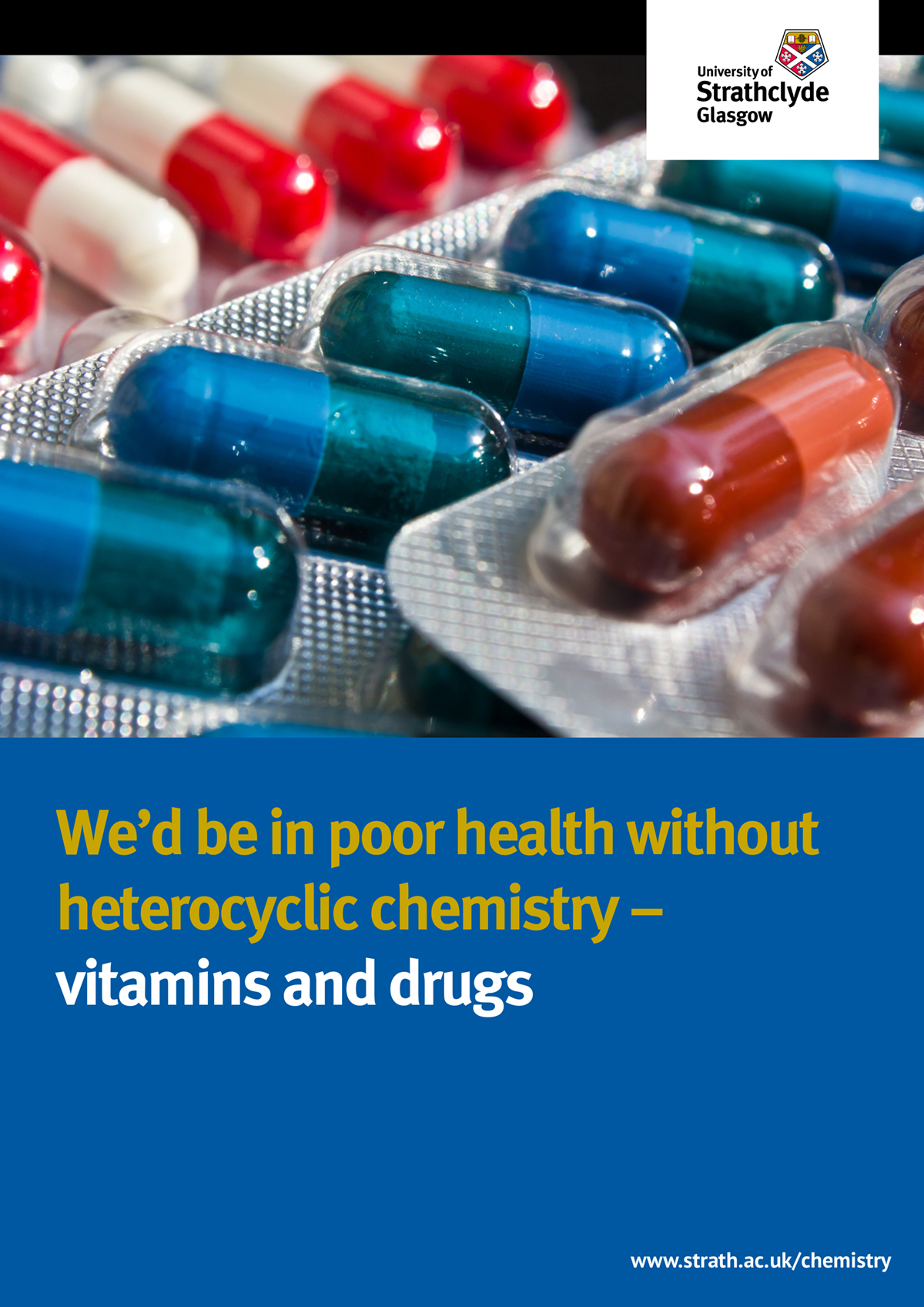Professor Colin J Suckling OBE DSc FRSE, Research Professor of Chemistry at the Department of Pure & Applied Chemistry, University of Strathclyde, explains his thoughts on why heterocyclic chemistry is all around us – and in us, including a detailed focus on vitamins and drugs
While heterocyclic chemistry is indeed all around us, such as in vitamins and drugs, the author draws our attention to the view from his window, something that brings to our attention the fact that: “colour is the visible manifestation of one of the most important branches of chemistry; scientists call it heterocyclic chemistry.”
Colin then tells us precisely how he defines heterocyclic chemistry, which he says is the chemistry of compounds with atoms joined in rings, mainly with five or six atoms, the majority of which are carbon, but others are nitrogen especially, oxygen, sulphur or phosphorus and sometimes metals and additional elements.
While the field of heterocyclic chemistry is not easy to explain to the layman, it is very useful to know that compounds obtained can be used to carry out many valuable and beneficial tasks in applications ranging from drugs to TV screens. In this publication, Colin focuses on heterocyclic chemistry in terms of vitamins and new medicines.
One of the many insights given is that life itself depends exquisitely on heterocyclic chemistry and that many of the working components of living cells are also heterocyclic compounds. Colin believes that vitamins are a very good example of this, such as folic acid to name just one that is well-known. Others are typical vitamins that can be found in branded breakfast cereals, including vitamins B1 (thiamine), B2 (riboflavin), B3 (niacin), B6 (pyridoxine), B12 (cobalamin), and C (ascorbic acid).
In this vein, one interesting fact presented to us is that the world market for vitamins and vitamin-based food supplements has almost doubled in value since 2007, reaching $106.2 billion during 2017. Added to this, did you know that specialist shops charge high prices for nicely packaged vitamin supplements which are essentially just cheap heterocyclic compounds?
Very interestingly, we learn that like other core components of chemistry, kinetics, thermodynamics, functional group chemistry and the chemistry of the elements, heterocyclic chemistry has not changed during the last 50 years. For example, the Celtic Tribes of 2000 years ago are well-known for using woad and today, the same dye is extensively used in denim products.
I trust that you find the contents of this fascinating e-book helpful, as you learn more about the field of heterocyclic chemistry and the excellent drug discovery work taking place at the University of Strathclyde.


